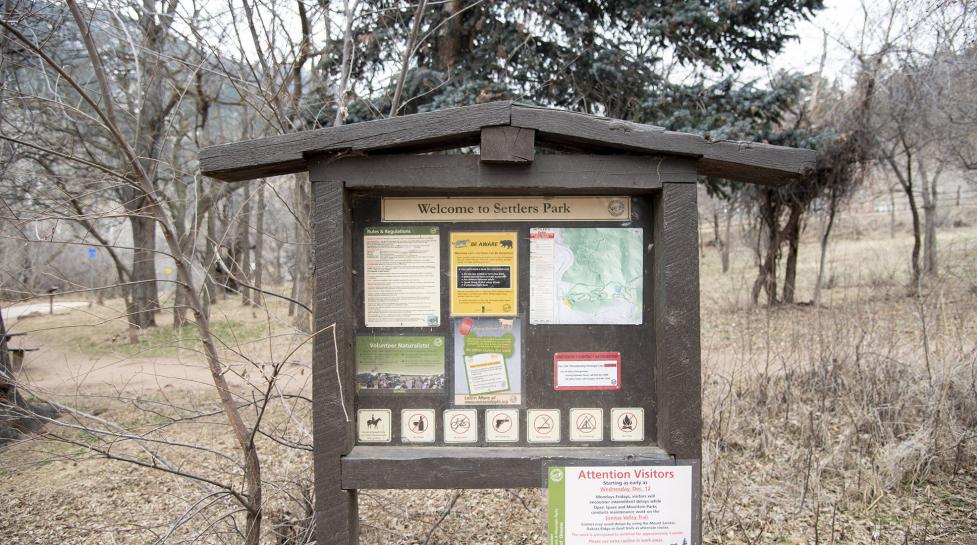"The Peoples' Crossing" name honors the area as a crossroads for Indigenous Peoples who have traversed and lived in the mountains and plains of the Boulder area since time immemorial.
The City of Boulder has renamed “Settler’s Park” in west Boulder to “The Peoples’ Crossing” – a name developed by representatives from federally recognized American Indian Tribes. The name honors the area as a crossroads for Indigenous Peoples who have traversed and lived in the mountains and plains of the Boulder area since time immemorial.
The city plans to officially implement the name change – with new trailhead signs and website changes – before Indigenous Peoples Day in October. The city also anticipates installing temporary signs on current interpretative panels in the area to help inform visitors of the name change, its meaning and how Tribal Nations helped rename the area.
The City of Boulder extends its gratitude to Tribal Representatives for developing a consensus recommendation to rename Settler’s Park. The new name also represents two other significant themes Tribal Representatives discussed during consultations with the city:
- “The People” or “Our People” are English translations for how many American Indian Tribal Nations refer to themselves in their native languages.
- Usage of the term “The People” is meant to be inclusive of all people who have traveled through and have lived in the Boulder area.
Tribal Representatives’ recommendation to rename “Settler’s Park" advances city Racial Equity Plan goals and strategies and helps the city fulfill its Indigenous Peoples Day Resolution, which a community-initiated group developed with the assistance of the City of Boulder Human Relations Commission.
The resolution requires the city to “correct omissions of the Native American presence in public places, resources and cultural programming.” It also specifically directed the city to receive input from American Indian Tribes that share agreements with the city for a name that “commemorates the Indigenous presence on the parkland known as Settler’s Park.”
The “Settler’s Park” area below the Red Rocks formation in west Boulder is generally thought to be the location where – according to the city’s Indigenous Peoples Day Resolution and other historical sources – Arapaho Chief Left Hand notified gold seekers that they could not remain on Indigenous land as defined by the 1851 Treaty of Fort Laramie. City research indicates that, historically, the area was primarily known as "Red Rocks,” and that the name “Settler’s Park” does not appear to have been in widespread formal or colloquial usage prior to the early 1990s.
Renaming this area and installing educational and interpretative signage in this historically significant and popular area will help the city to:
- Provide tens of thousands of community members and open space visitors an opportunity to reflect and acknowledge the Indigenous presence on Boulder area land. Current interpretative materials in the area do not include Indigenous perspectives and present an incomplete version of Boulder’s history.
- Develop unique education and interpretation materials in collaboration with American Indian Tribes that consult with the city. The city – as agreed to at a recent April consultation with Tribal Nations – is seeking guidance from Tribal Representatives as it develops permanent signage and education that commemorates Indigenous Peoples’ connection to the Boulder area and “The Peoples’ Crossing” site.
